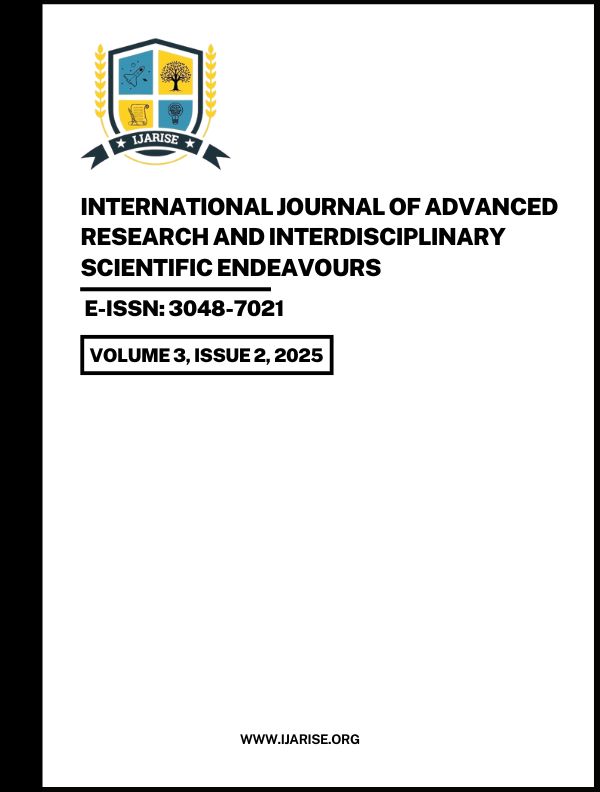Physics-Augmented Neural Network for Predicting Corrosion Inhibition Efficiency of Green Inhibitors
Published 2025-08-30
Keywords
- Artificial Neural Network (ANN),
- Physics-Augmented Machine Learning,
- Corrosion Inhibition Efficiency,,
- Green Corrosion Inhibitors,
- Eco-Friendly Materials
- Hybrid Modelling,
- Inhibitor Efficiency,
- Intelligent Corrosion Control. ...More
How to Cite
Copyright (c) 2025 International Journal of Advanced Research and Interdisciplinary Scientific Endeavours

This work is licensed under a Creative Commons Attribution 4.0 International License.
Abstract
Material degradation, particularly corrosion, poses a persistent engineering challenge that impacts infrastructure, transportation, energy, and manufacturing sectors. In India alone, corrosion-related losses are estimated to exceed several billion dollars annually, affecting pipelines, bridges, marine vessels, and industrial plants. This study presents a physics-augmented artificial neural network (ANN) framework for predicting the performance of eco-friendly corrosion inhibitors in acidic environments. The approach integrates experimentally measured process parameters concentration, temperature, immersion time, and pH together with adsorption equilibrium constants obtained from independent literature sources, thereby enhancing mechanistic consistency and interpretability. A curated dataset of 60 inhibitor–condition combinations was compiled from peer-reviewed studies. The ANN, implemented in MATLAB and trained using the Levenberg–Marquardt algorithm with L2 regularization and early stopping, achieved high predictive fidelity (R² ≈ 0.99 across training, validation, and testing). Predictive robustness was further assessed through repeated random splits and bootstrapped ensembles. Beyond corrosion, the framework is generalisable to other degradation phenomena such as coating breakdown, oxidation, and galvanic corrosion relevant to aerospace, marine, and automotive sectors. Real-time deployment via a lightweight graphical interface enables engineers to rapidly estimate inhibitor performance, reduce reliance on time-consuming experiments, and support integration with digital twin platforms for predictive maintenance. The method offers a pathway to accelerate green materials selection, cut experimental screening costs substantially, and enhance the sustainability and resilience of critical infrastructure.


